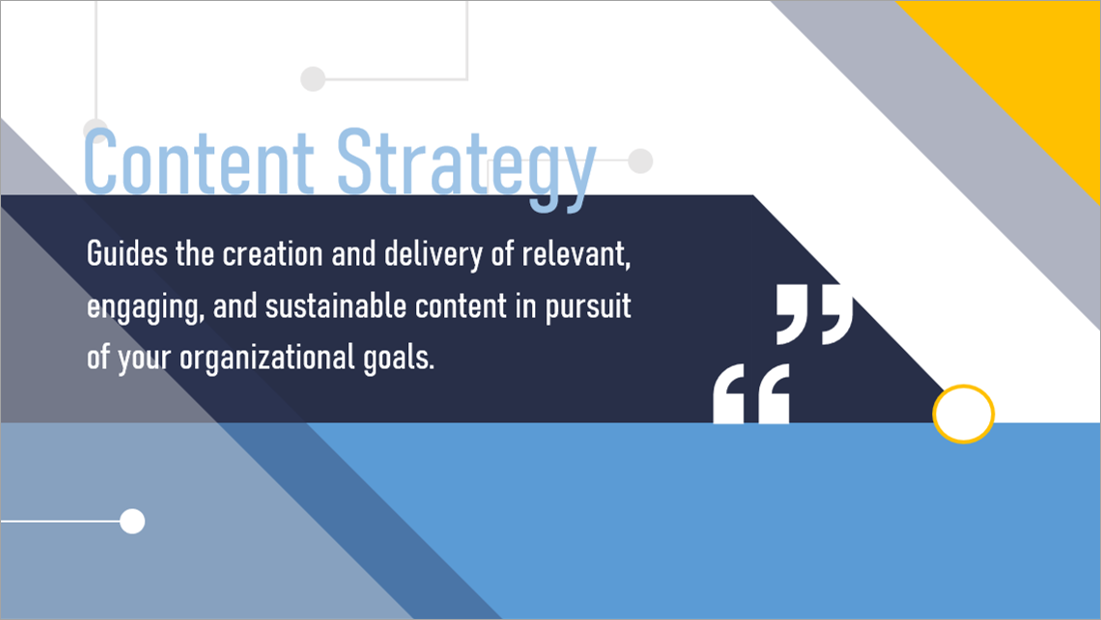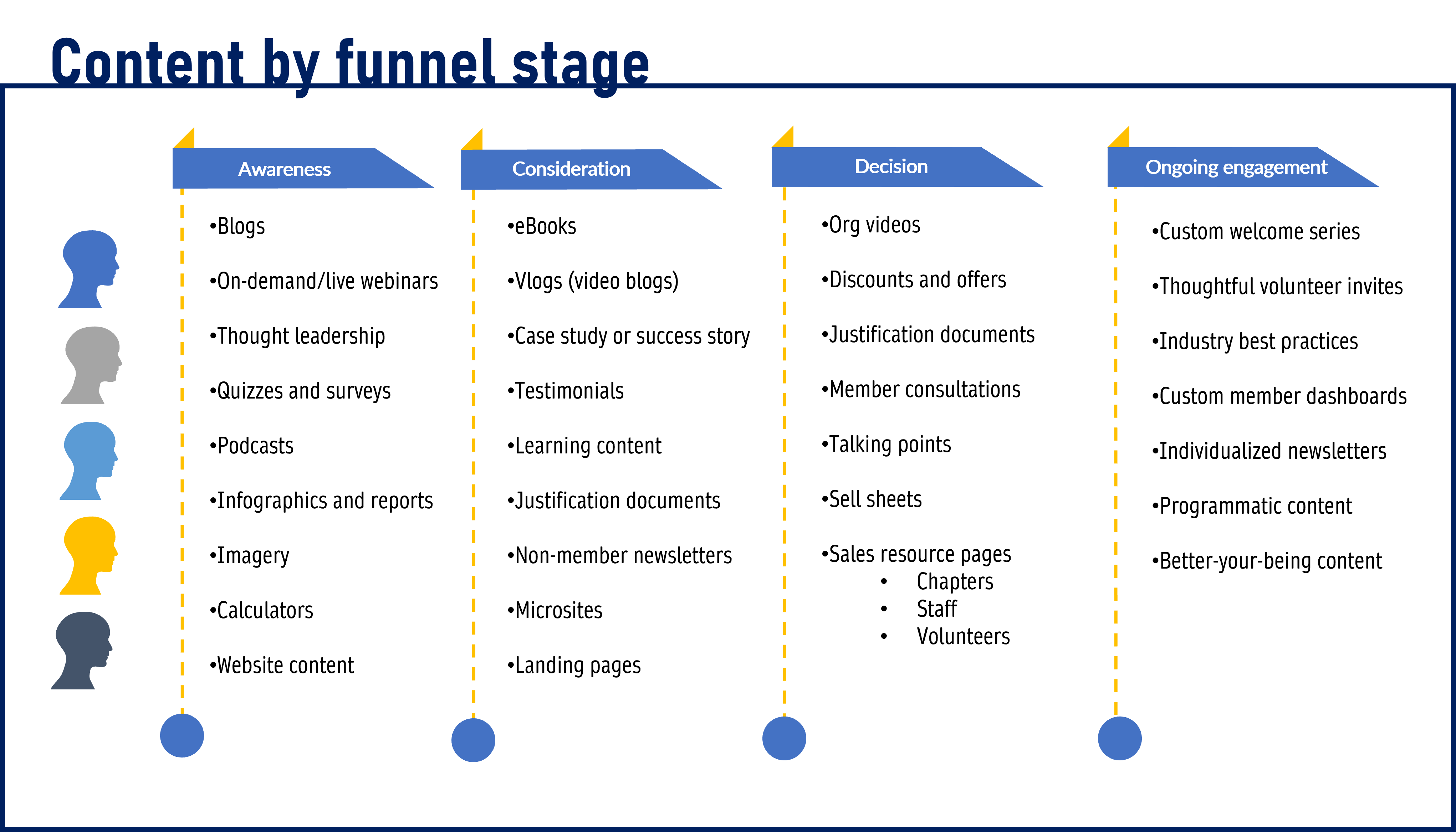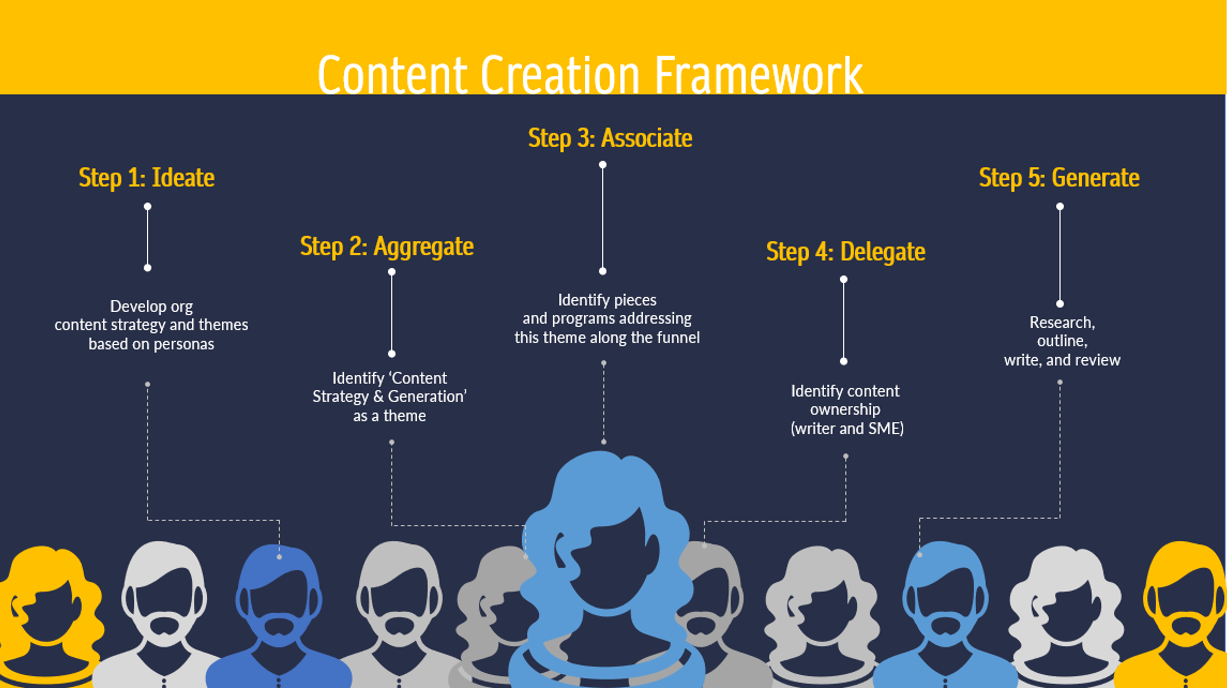Anatomy of a Content Strategy
Personas | content marketing | Content Strategy | program development
Content is even more meaningful for associations because the general value prop for most organizations comes down to the 3 Cs: communications, communities, and most importantly, content.
From this perspective, content becomes the fuel for the entire operational engine, from marketing to sales to programming.
With such reliance on ongoing and solid content generation, associations should have a content strategy in place that supports the entire member lifecycle, from prospect >> lead >> member >> engaged (buying) member.As such, your association's content strategy should provide a systematic way to deliver compelling, sustainable, and relevant content in pursuit of your organizational goals.

So you see, it's not just about supporting the marketing funnel. When it comes down to building a centralized content strategy, your entire organization should be focused on two key questions:
- What does our content look like today?
- What should our content look like moving forward based on our audiences?
- Positioning: A central system that supports your core messaging and persona-specific messaging to ensure everyone is on the same page during content development. A brand messaging platform, for instance, could be a great tool to help teams stay unified in the positioning of their brand, products, and services.
- Themes: Topical trends that guide your content. A thematic content calendar, similar to an editorial calendar, is designed to drive all content generated during that period of time around a particular content topic. For example, if 'Machine Learning in Marketing Operations' is a theme, all blogs, webinars, infographics, selling sheets, publications, just to name a few, would be focused on that topic for the month. Similarly, you have content theming around each of your personas.
- Owners: Organizing subject-matter experts, writers, editorial teams, and/or other content developers by their role in the process. Owners could consist of on-staff personnel, member volunteers, or outside service providers, and should be documented in terms of who's doing what during the generation process (i.e. who's interviewing, who's writing, who's tweaking editorial, etc.)
- Mapping: Arguably one of the most important pieces of this framework, translating audience (personas) into content and placing it along the funnel with goal intention. Once again, mapping applies to programmatic content just as much as marketing content. In other words, if persona attributes or needs surface to warrant a program- and/or product-driven dev strategy (i.e. development of a new conference), your content strategy would catalyze the need into revenue-based programming.
These components should work holistically as part of a robust content strategy to achieve your goals. So what are the fundamentals to building an effective content strategy?
For example, a persona may be called CEO Charlie. Charlie is very analytical, has a goal of scaling his or her company, finds it challenging to get cross-functional collaboration in their organization, and needs to keep his entire staff upskilled in the ever-evolving industry. This basic information alone tells you that a content idea could be a webinar, lead by a fellow CEO member, on the topic: Cross-Department Productivity: The Key Ingredient to Scaling Your Business and How to Measure Its Success.
The success of your demand gen content campaigns is easily measurable through website visits and bounces. Further evaluation on the sessions within the webpages and visitor demographics can also be useful information.
Quantitatively, you will measure this by form fills, subscriptions, visits on important pages, direct inquiries, and visits to membership pricing pages. Before anything, however, you’ll want to see if the users accessing your content are aligned with your personas.
Transactions, meetings, consultations, applications, registrations, and certifications will all be units of measurement in this space. Of course, these KPIs vary based on the type of association and the programming and services offered.
Renewals and program upsells are the obvious performance metrics you can use for this type of content. There’s also engagement scores (lead scoring) that show how much a particular member interacts with your content and your organization. These can be auto-calculated using Engagement & Growth platforms (like HubSpot), or in a few cases, through Association Management Systems (AMS).
For more macro-level insights, you can look at Member Lifetime Value (MLV) to see how long your members are staying, the frequency at which they purchase programs or services from you, and how much they spend with you during that time. You can apply this same formula to those you identify as 'Customers'. These are groups that may never become members but still consistently invest in your programming (as non-members) for years at a time.

Start at the top of the funnel (the awareness stage) for 'Tom,' which could include a brief article about the benefits of AI technology. Then, for the 'Toms' that make it to the middle of the funnel, you might provide a handbook that details some AI tech use-cases. And at the bottom of the funnel, you might promote a program for a conference with specific speakers dedicated to how AI is changing the way organizations operate.
All in all, the purpose is to gear your content to the audience that would derive the most value from it based on their persona and where they are in their journey with you.

About Aimee Pagano
Aimee joins HighRoad Solution with 15+ years of integrated marketing and communications experience, primarily in client-facing roles within the association and SaaS space. Her specialties include persona development, content strategy/management, lead gen and awareness campaign development, and website development/optimization.






